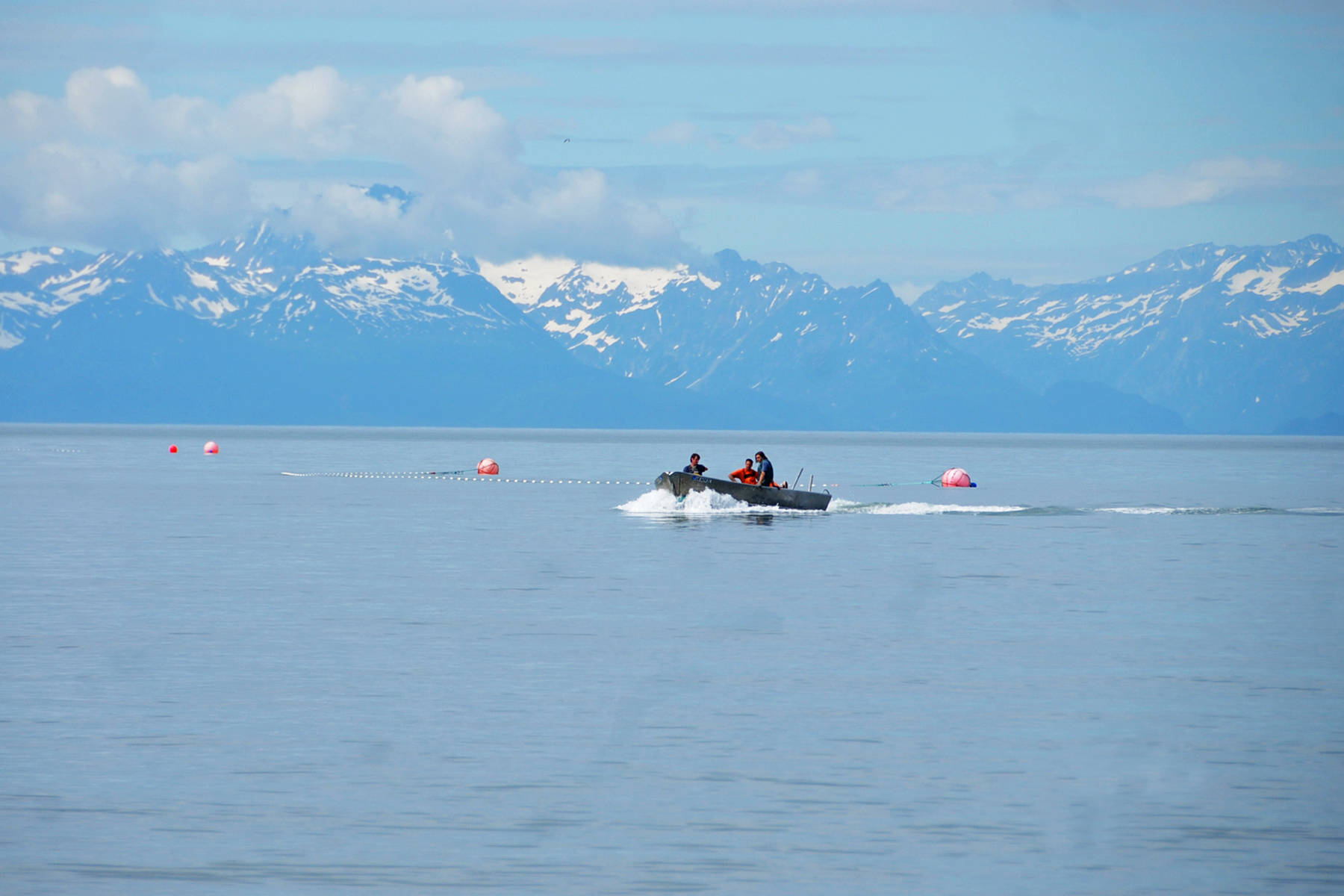The Legislature is set to consider a buyback program for commercial fishing permits in Cook Inlet’s east side setnet fishery.
The east side setnet fishery is one of the largest and most contentious fisheries in Upper Cook Inlet. Hundreds of permit holders and crews fish the beaches between Boulder Point and Ninilchik each summer to harvest primarily sockeye salmon but also catch king, silver and pink salmon running close to the shore.
Senate Bill 135, sponsored by Sen. Peter Micciche (R-Soldotna) and filed ahead of the legislative session, would set up a regulatory structure to enable a potential buyback of some of those permits. Essentially, the bill as written would reorganize the administrative areas of the fishery to create an Eastern Set Net Subdistrict that includes all the east side shore fisheries. The commissioner could not issue any new or subleases of shore leases or permits in that area, though existing permit holders could continue to fish.
The fishermen within that district would then vote on whether to authorize a buyback program. If rejected, everything would revert to the way it was. If approved, permit holders could voluntarily sell their permits back to the Commercial Fisheries Entry Commission for a total of $260,000. Up to 40 percent of the total permits fished in the same area in 2017 could be sold back to the state under the program, according to the bill.
The reduction is meant to bring participation numbers back to where they were in the mid-1980s, before more fishermen entered the east side fishery, Micciche said. He described it as a win-win for fishermen, both commercial and inriver, as more fish will likely make it into Cook Inlet rivers for escapement and those permit holders who remain in the commercial fishery will likely do better with less competition.
“The end result and our end result goals is that it leaves more viable setnet fisheries for generations to come,” he said. “In my view, the remaining fisheries will be more lucrative, more efficient.”
There are still details being worked out on the bill, Micciche said. He emphasized that this bill is a draft — it won’t be scheduled for a committee hearing in the Legislature until fishermen have had a chance to review and comment on it and it can be pulled at any time if the bill is no longer acceptable to them, he said.
“Ultimately, they make the final vote and if they vote no, the final bill will have it revert to the original condition,” he said. “We are not going to impact the fishery’s ability to function as it has for years.”
There is no funding mechanism built into the bill. Instead, it sets up a structure and leaves it open for possible private or federal funding, Micciche said. The National Oceanic and Atmospheric Administration’s National Marine Fisheries Service administers a fishing capacity reduction program that funds fleet reduction programs, such as an ongoing one in the Southeast Alaska salmon purse seine fishery.
The bill began as an idea from some fishermen, and Micciche said he worked with them to gather feedback before drafting an idea and sending it to the Legislature for discussion.
For sportfishermen, reducing the number of setnets in the water has the potential to put more king salmon into the Kenai River, said Kenai River Sportfishing Association Executive Director Ricky Gease.
East side setnetters caught 4,631 king salmon during the 2017 season, which were headed for a variety of different systems. The size of the Kenai River’s king salmon runs, particularly the early run, have been a concern for about the last decade, since the numbers of fish returning started declining. With less gear in the water, the setnetters remaining could get more fishing time and the number of kings making it into the river could increase, Gease said.
“Our hope on that is that it would deliver more kings to the Kenai River and lessen the need for more consistent closures with more kings into the river,” he said. “… We would like to see more a priority on those sites, if it could be linked, tied to more of a reduction of king salmon intercept. Obviosuly we would be more supportive of that approach. In the current bill, it doesn’t have a mechanism to prioritize king salmon harvest. … I don’t know how that would be included.”
He said it remained to be seen how a potential fleet reduction would impact management strategies in Upper Cook Inlet. The Alaska Department of Fish and Game regulations on east side setnet commercial fisheries are complex, particularly close to the Kenai River, tied to escapement projections for sockeye salmon and king salmon on the Kenai River and staggered from early June to mid-August with different sections opening at different dates in the summer.
East side setnetters’ trade organization, the Kenai Peninsula Fishermen’s Association, didn’t help author SB 135 but will review the details, said KPFA President Andy Hall. The organization did conduct a survey of its members to ask about approval of the idea of a fleet reduction and got a fairly positive response, he said.
The Kenai Peninsula Fishermen’s Association board was planning to meet to discuss the bill, Hall said. As a setnetter, he said he personally had some questions about it as written.
“My initial scan of it is it’s deeply flawed,” he said. “However, the senator has indicated that this is a starting point and he’s willing to address any concerns that come up. As it stands, I have a lot of questions.”
Reach Elizabeth Earl at elizabeth.earl@peninsulaclarion.com.

